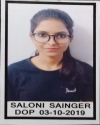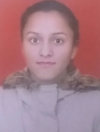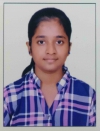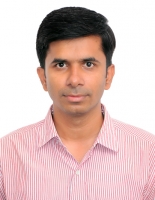Areas of Interest:
Biological medical devices using animal tissues and polymeric scaffolds, Medical device regulatory, Nonalcoholic fatty liver disease (NAFLD), Medical device biocompatibility and toxicity evaluation, Pluripotent stem cell (PSC)-derived organoids, Product Design, Machine Learning
Present Research Interest:
1) Development of tissue based (biological) medical devices
Homografts, xenografts, or synthetic or mechanical prosthetic devices are commonly implanted during these surgical procedures or soft tissue repair. These grafts, however, suffer from disadvantages such as lack of growth potential, have limited durability, and are associated with an increased incidence of repeated surgeries. Our laboratory focuses on how these drawbacks can probably be addressed and overcome through the development of living, biologic tissue-engineered valves, patches, hydrogels, and conduits. The purpose of this study is not only to focus solely on methods by which biomaterials are processed but also to assess the ability of such techniques to produce mechanically and biologically suitable tissue surrogates.
2) Pluripotent Stem Cell-Derived Organoid (Hepatic, Neural and Cardiac) Engineering
Human pluripotent cells such as human embryonic stem cells (hESCs) and induced pluripotent stem cells (hiPSCs) share the essential properties of self-renewal and pluripotency o differentiate into all possible cell types of the adult body. My laboratory focuses on developing a 3-Dimensional organoid (hepatic, neural and cardiac) system using hiPSCs and biomaterials for drug discovery, disease modelling and toxicology studies.
3) Nonalcoholic fatty liver disease (NAFLD) in vitro and in vivo modeling.
The worldwide prevalence of nonalcoholic fatty liver disease (NAFLD) has drastically increased in line with the epidemic of obesity. The currently acknowledged theory is the "multiple-hit model," which postulates that genetic, dietary, and environmental factors such as endocrine-disrupting chemicals (EDCs) to the etiopathogenesis of NAFLD. Currently, available preclinical models, be they in vivo or in vitro, do not fully represent critical aspects of the human disease state. To create novel prevention or therapeutic methods, we are developing the right combination of a suitable diet, matched control diet, appropriate rodent model, and in vitro hiPSCs-hepatocytes model.
4) Machine Learning tools/AI tools to achieve biocompatibility of medical device endpoints
The US-FDA, EU-MDR and Indian-FDA and other competent regulatory authorities have released new regulations and guidelines in order to decrease the burden of getting market access for innovative medical devices and reprocessing for medical devices. The project aims to develop a tool which functions as a guide for both researchers and engineers to improve their medical device design and development process concerning biocompatibility using documents such as ISO 10993, US-FDA Guidance, EU-MDR Guidance and ISO 14971. Focus areas include:
- Machine learning (ML) algorithms to some toxicology related endpoints
- To integrate deep learning techniques into in vitro/in vivo/in silico analysis workflows and new developments in the area of deep learning for computational assessment of toxicology
[1] R.K. Sahoo, S.K. Tripathi, S. Biswal, M. Panda, S.S. Mathapati, B.K. Biswal, Transforming native exosomes to engineered drug vehicles: A smart solution to modern cancer theranostics, Biotechnol J 19(2) (2024) e2300370.
[2] S. Gujjar, A. Tyagi, S. Sainger, P. Bharti, V. Nain, P. Sood, P. Jayabal, J.C. Sharma, P. Sharma, S. Rajput, A.K. Pandey, A.K. Pandey, P. Abnave, S. Mathapati, Biocompatible Human Placental Extracellular Matrix Derived Hydrogels, Advanced Biology (2023).
[3] Bhawna, S. Gujjar, K.S. Venkataprasanna, S. Tiwari, J.C. Sharma, P. Sharma, M. Pujani, A.K. Pandey, P. Abnave, D. Kalyanasundaram, S. Mathapati, Stabilized human amniotic membrane for enhanced sustainability and biocompatibility, Process Biochemistry 129 (2023) 67-75.
[4] S.P. Harrison, R. Siller, Y. Tanaka, M.E. Chollet, M.E. de la Morena-Barrio, Y. Xiang, B. Patterson, E. Andersen, C. Bravo-Pérez, H. Kempf, K.S. Åsrud, O. Lunov, A. Dejneka, M.-C. Mowinckel, B. Stavik, P.M. Sandset, E. Melum, S. Baumgarten, F. Bonanini, D. Kurek, S. Mathapati, R. Almaas, K. Sharma, S.R. Wilson, F.S. Skottvoll, I.C. Boger, I.L. Bogen, T.A. Nyman, J.J. Wu, A. Bezrouk, D. Cizkova, J. Corral, J. Mokry, R. Zweigerdt, I.-H. Park, G.J. Sullivan, Scalable production of tissue-like vascularized liver organoids from human PSCs, Experimental & Molecular Medicine 55(9) (2023) 2005-2024.
[5] J. Prakash, K.S. Venkataprasanna, V. Jayaraman, S. Dinesh, G. Bharath, F. Banat, S.S. Mathapati, G.D. Venkatasubbu, Exploring the potential of graphene oxide nanocomposite as a highly efficient photocatalyst for antibiotic degradation and pathogen inactivation, Diamond and Related Materials 137 (2023) 110104.
[6] P. Jayabal, V. Kannan Sampathkumar, A. Vinothkumar, S. Mathapati, B. Pannerselvam, S. Achiraman, G.D. Venkatasubbu, Fabrication of a Chitosan-Based Wound Dressing Patch for Enhanced Antimicrobial, Hemostatic, and Wound Healing Application, ACS Applied Bio Materials 6(2) (2023) 615-627.
[7] D.T. Sarmah, S. Gujjar, S. Mathapati, N. Bairagi, S. Chatterjee, Identification of critical autophagy-related proteins in diabetic retinopathy: A multi-dimensional computational study, Gene 866 (2023) 147339.
[8] L.N. Ramana, S.S. Mathapati, N. Salvi, M.V. Khadilkar, A. Malhotra, V. Santra, T.K. Sharma, A paper microfluidic device based colorimetric sensor for the detection and discrimination of elapid versus viper envenomation, Analyst 147(4) (2022) 685-694.
[9] D.K. Bishi, S.S. Mathapati, P. Padhi, K.S. Venkataprasanna, H. Ezhilarasu, R. Ramalingam, M.H.A. Rahim, J.R. Venugopal, 13 - Advances and applications of biofiber polymer composites in regenerative medicine, in: S.M. Rangappa, M. Puttegowda, J. Parameswaranpillai, S. Siengchin, S. Gorbatyuk (Eds.), Advances in Bio-Based Fiber, Woodhead Publishing2022, pp. 275-314.
[10] K.S. Venkataprasanna, J. Prakash, S.S. Mathapati, G. Bharath, F. Banat, G.D. Venkatasubbu, Development of chitosan/poly (vinyl alcohol)/graphene oxide loaded with vanadium doped titanium dioxide patch for visible light driven antibacterial activity and accelerated wound healing application, International Journal of Biological Macromolecules (2021).
[11] V. Sharma, S.K. Dash, K. Govarthanan, R. Gahtori, N. Negi, M. Barani, R. Tomar, S. Chakraborty, S. Mathapati, D.K. Bishi, P. Negi, K. Dua, S.K. Singh, R. Gundamaraju, A. Dey, J. Ruokolainen, V.K. Thakur, K.K. Kesari, N.K. Jha, P.K. Gupta, S. Ojha, Recent Advances in Cardiac Tissue Engineering for the Management of Myocardium Infarction, Cells 10(10) (2021) 2538.
[12] S. Rallapalli, S. Guhathakurta, D.K. Bishi, R. Subbarayan, S. Mathapati, P.S. Korrapati, A critical appraisal of humanized alternatives to fetal bovine serum for clinical applications of umbilical cord derived mesenchymal stromal cells, Biotechnology Letters 43(10) (2021) 2067-2083.
[13] S. Basak, A. Sarkar, S. Mathapati, A.K. Duttaroy, Cellular growth and tube formation of HTR8/SVneo trophoblast: effects of exogenously added fatty acid-binding protein-4 and its inhibitor, Molecular and Cellular Biochemistry 437(1) (2018) 55-64.
[14] R. Siller, S. Greenhough, S. Mathapati, K. Si-Tayeb, G.J. Sullivan, Future Challenges in the Generation of Hepatocyte-Like Cells From Human Pluripotent Stem Cells, Current Pathobiology Reports 5(3) (2017) 301-314.
[15] R. Siller, E. Naumovska, S. Mathapati, M. Lycke, S. Greenhough, G.J. Sullivan, Development of a rapid screen for the endodermal differentiation potential of human pluripotent stem cell lines, Scientific Reports 6 (2016) 37178.
[16] S. Mathapati, R. Siller, A.A. Impellizzeri, M. Lycke, K. Vegheim, R. Almaas, G.J. Sullivan, Small-Molecule-Directed Hepatocyte-Like Cell Differentiation of Human Pluripotent Stem Cells, Curr Protoc Stem Cell Biol 38 (2016) 1g.6.1-1g.6.18.
[17] D.K. Bishi, S. Mathapati, J.R. Venugopal, S. Guhathakurta, K.M. Cherian, R.S. Verma, S. Ramakrishna, A Patient-Inspired Ex Vivo Liver Tissue Engineering Approach with Autologous Mesenchymal Stem Cells and Hepatogenic Serum, Advanced Healthcare Materials 5(9) (2016) 1058-1070.
[18] S. Mathapati, D.K. Bishi, J.R. Venugopal, K.M. Cherian, S. Guhathakurta, S. Ramakrishna, R.S. Verma, Nanofibers coated on acellular tissue-engineered bovine pericardium supports differentiation of mesenchymal stem cells into endothelial cells for tissue engineering, Nanomedicine 9(5) (2014) 623-634.
[19] D.K. Bishi, S. Mathapati, K.M. Cherian, S. Guhathakurta, R.S. Verma, In Vitro Hepatic Trans-Differentiation of Human Mesenchymal Stem Cells Using Sera from Congestive/Ischemic Liver during Cardiac Failure, PLoS ONE 9(3) (2014) e92397.
[20] S. Guhathakurta, S. Mathapati, D.K. Bishi, S. Rallapalli, K.M. Cherian, Nanofiber-reinforced myocardial tissue-construct as ventricular assist device, Asian Cardiovascular and Thoracic Annals 22(8) (2014) 935-943.
[21] B. Ramesh, S. Mathapati, S. Galla, K.M. Cherian, S. Guhathakurta, Crosslinked acellular saphenous vein for small-diameter vascular graft, Asian Cardiovascular and Thoracic Annals 21(3) (2013) 293-302.
[22] S. Mathapati, D.K. Bishi, S. Guhathakurta, K.M. Cherian, J.R. Venugopal, S. Ramakrishna, R.S. Verma, Biomimetic acellular detoxified glutaraldehyde cross-linked bovine pericardium for tissue engineering, Mater Sci Eng C Mater Biol Appl 33(3) (2013) 1561-72.
[23] D.K. Bishi, S. Mathapati, V.J. Reddy, S. Guhathakurta, K. Cherian, S. Ramakrishna, R. Verma, Trans-differentiation of Human Mesenchymal Stem Cells Generates Functional Hepatospheres on Poly (L-lactic acid)-co-poly (ε-caprolactone)/collagen Nanofibrous Scaffolds, J. Mater. Chem. B (2013).
[24] S. Mukherjee, V. Jayarama Reddy, R. Ravichandran, S. Mathapati, S. Guhathakurta, M. Raghunath, S. Ramakrishna, Practical Considerations for Medical Applications using Biological Grafts and their Derivatives, MRS Proceedings 1418(1) (2012).
[25] R. Balasundari, D.K. Bishi, S. Mathapati, S.B. Naser, K.M. Cherian, S. Guhathakurta, Nanocoated Botanical Scaffold in Salvage for Human Tissue Regeneration, Journal of Biomaterials and Tissue Engineering 2(4) (2012) 330-335.
[26] S. Mathapati, R.S. Verma, K.M. Cherian, S. Guhathakurta, Inflammatory responses of tissue-engineered xenografts in a clinical scenario, Interactive CardioVascular and Thoracic Surgery 12(3) (2011) 360-365.
[27] S. Mathapati, S. Galla, K. Sankaranarayanan, R.S. Verma, K.M. Cherian, S. Guhathakurta, Qualitative and quantitative detection of sodium deoxycholic acid in decellularized tissue, Indian Journal of Thoracic and Cardiovascular Surgery 26(2) (2010) 129-131.
[28] S. Galla, S. Mathapati, V.M. Nayak, K.M. Cherian, S. Guhathakurta, Analytical study to evaluate the extracellular matrix in processed acellular xenografts, Indian Journal of Thoracic and Cardiovascular Surgery 26(2) (2010) 132-138.
[29] S. Mathapati, S.B. Arumugam, R.S. Verma, High cholesterol diet increases MMP9 and CD40 immunopositivity in early atherosclerotic plaque in rabbits, Acta Histochemica 112(6) (2010) 618-623.
Indian Patent filed:
1) A biomaterial and method of its preparation, 2022.
2) Established hepatic differentiation of Pluripotent stem cells (2 dimensional and Organoid), 2024
- Received Grant-in-aid: Under the scheme Fast Track Scheme for Young Scientists-2009, March 2011-March 2013.
- Received financial assistance from Dept. of Science and Technology (DST) International Travel Support Scheme for Participation in Conferences Abroad: Annual meeting of the International Society for Stem Cell Research (ISSCR-2013), June 12-15, 2013 in Boston, Massachusetts.
- Received award and certificate for excellent performance at Engineering and R&D Services, HCL Technologies, Chennai during the quarter October 2018.

MS. SALONI SAINGER
PH.D STUDENT

MR. SUNIL
PH.D STUDENT

MS. PRATIBHA
PH.D STUDENT

MS. SHUBHANSHI RANJAN
PH.D STUDENT

MR. ANSHUL CHIKARA
JUNIOR RESEARCH FELLOW

MS. MANISHA KUMARI
PH.D STUDENT

DR. J. PRAKASH
JUNIOR RESEARCH SCIENTIST
PhD Students:
1) Mr. Sunil, Junior Research Fellow
Email: sunil@thsti.res.in
2) Ms Saloni Saignar, Junior Research Fellow
Email: salonisainger@thsti.res.in
3) Ms Pratibha, Junior Research Fellow
Email: pratibha.jaipal@thsti.res.in
4) Ms. Shubhanshi Ranjan, Junior Research Fellow
Email: shubhanshiranjan@thsti.res.in
5) Ms. Manisha Kumari, Junior Research Fellow
Email: manisha@thsti.res.in
Research Fellows:
1) Mr. Anshul Chikara, Project Research Scientist-1
2) Mr. Anurag Tyagi, Junior Research Fellow, 2021-2023
Postdoctoral Fellow:
1) Dr Prakash J, SERB-NPDF
Lab Assistant:
1) Mr. Sandeep Kumar
Mentoring and Training:
1) 2019-20: Mr. Venkataprasanna K S, Undergraduate Student, SRM University, Chennai. Currently pursuing MS at University of Tübingen, Germany.
2) 2021: Mr. Arivazhagan S, Undergraduate Student, Bharathidasan University, Tiruchirappalli.
3) 2021: Mr. Prithvi Raj. R, Undergraduate Student, SRM University, Chennai.
4) 2022: Mr. Sailesh Srinivasan, Undergraduate Student, Bharathidasan University, Trichy. Currently pursuing MS-PhD at Indian Institute of Science, Banglore.
5) 2022: Mr. Anoop Sharma, Undergraduate Student, Manav Rachna international institute of research and studies, Faridabad.
6) 2023: Mr. Dinesh Sangule, Postgraduate Student, Central University of South Bihar, India.
7) 2023: Mr. Aromal Nath V S, Postgraduate Student, Cochin University of Science and Technology (CUSAT), Cochin, Kerala
8) 2024: Mr. Sanyam Jain, Undergraduate Student, Delhi Technological University, Delhi. Currently pursuing PhD at Nanyang Technological University, Singapore.
9) 2024: Ms. Komal Arora, Amity University, Noida.
10) 2024-2025: Ms. Shrestha Dutta, IIT Dhanbad.
11) 2024-2025: Mr. Uttanarayan Paul, NIPER Guwahati.
We are looking for diligent students and recent PhD graduates to join our group. Feel free to contact us to discuss opportunities for pursuing PhD and postdoctoral training in our lab. We would be happy to sponsor deserving candidates for postdoctoral fellowships such as SERB-NPDF, DBT-RA, DST-WOS, ICMR-RA, DBT-BioCARe, MK Bhan Young Researcher, INSPIRE Faculty, and IA-Early Career Fellowship.

